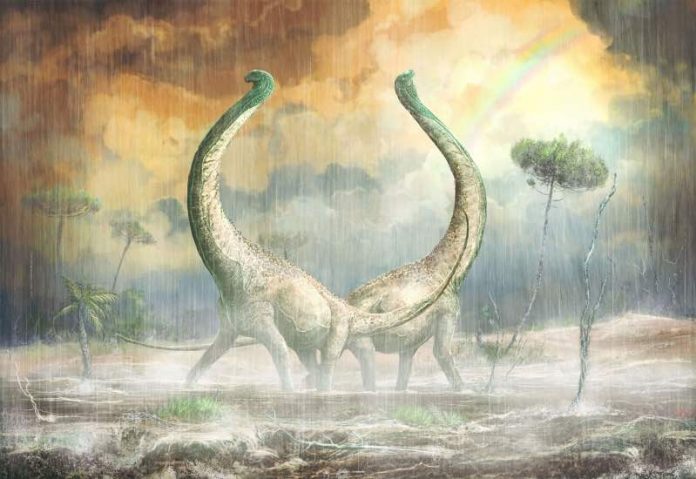The massive beast weighed 20 tones and at 30 feet tall it was bigger than a three storey house. It has been named the Mnyamawamtuka (corr) moyowamkia (corr) and was part of the titanosaur family – the huge dinosaurs with a massive body, and long thin neck and tails. Mnyamawamtuka lived 100 million years ago in the cretaceous period and would have roamed what is now northern Africa.
But most interestingly about the dinosaur is that the scientists who discovered it noted that its tail bones resembled the outline of a heart.
A team of US scientists discovered extremely well preserved fossils of the beast, including a variety of bones and even teeth.
Lead author Dr Eric Gorscak, of Midwestern University in Downers Grove, Chicago, said: “Although titanosaurs became one of the most successful dinosaur groups before the infamous mass extinction capping the Age of Dinosaurs, their early evolutionary history remains obscure.
Judy Skog, program director in the National Science Foundation’s Division of Earth Sciences which funded the research, added: “It’s also timely information about an animal with heart-shaped tail bones during this week of Valentine’s Day.”
The researchers also said the discovery not only allows for a more elaborate description of dinosaurs, but also paints a clearer picture of what Africa was like long before humans came into existence.
Co-author of the research published in PLOS One, Dr Patrick O’Connor, professor of anatomy at Ohio University, said: “The discovery of dinosaurs like Mnyamawamtuka and others we have recently discovered is like doing a four-dimensional connect the dots.
“Each new discovery adds a bit more detail to the picture of what ecosystems on continental Africa were like during the Cretaceous, allowing us to assemble a more holistic view of biotic change in the past.”
Ms Skog added: “This new dinosaur gives us important information about African fauna during a time of evolutionary change. The discovery offers insights into paleogeography during the Cretaceous.”
Titanosaurs were one of the most diverse of all the dinosaurs, with their remains being found in all of the continents, apart from Antarctica.
They were also one of the longest surviving, having roamed the Earth from around 163 million years ago to 66 million years ago, when the asteroid wiped out the dinosaurs.








